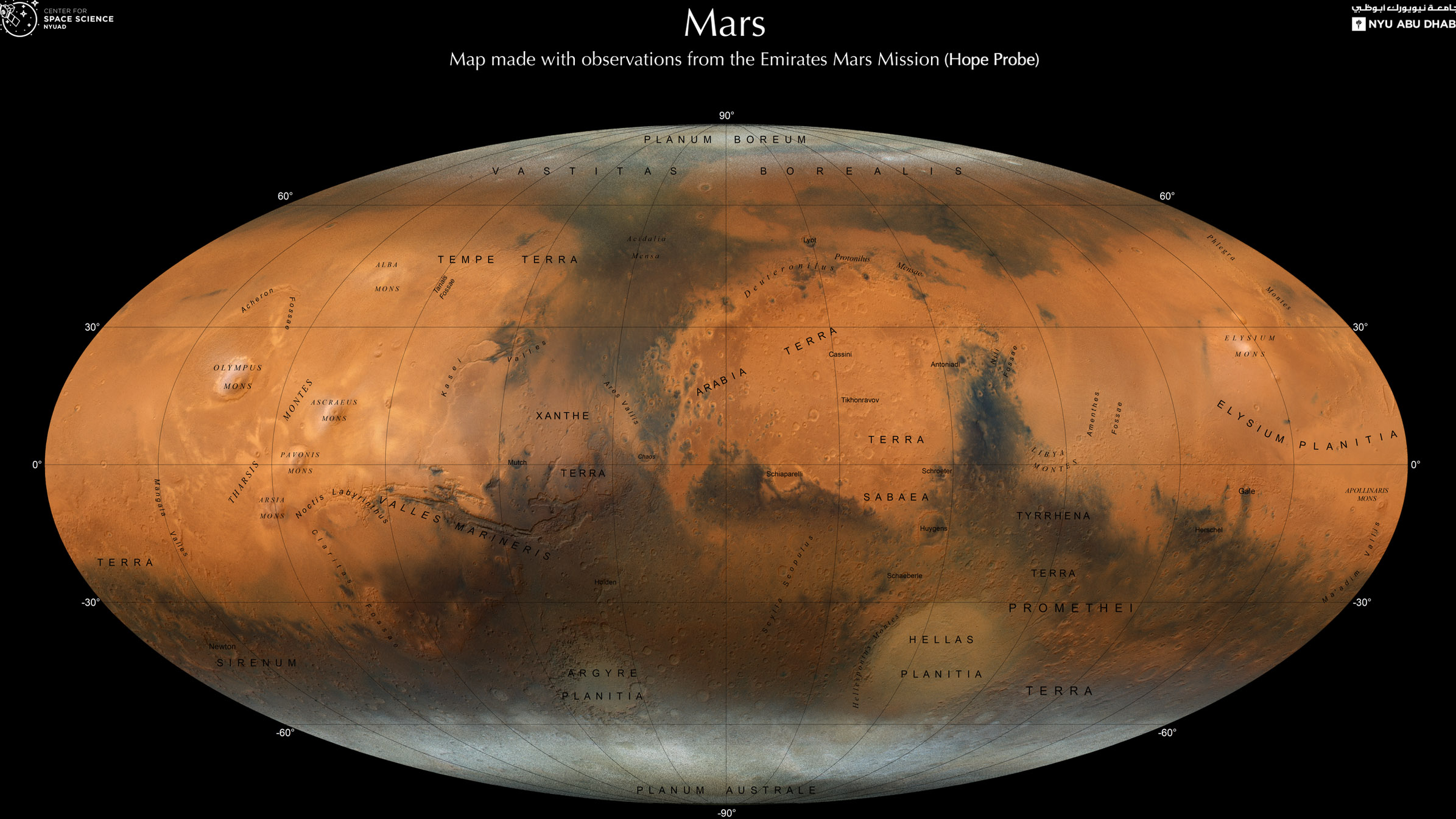UAE Mars orbiter creates stunning new map of the Red Planet
The map reveals stunning geological features on Mars in three dimensions.

A new map of Mars shows the Red Planet in stunning detail, revealing a wealth of fascinating geological features as seen from orbit.
The high-resolution map could help scientists answer a number of pressing questions about Mars including how it came to be a dry, arid, and barren landscape despite once being abundant with liquid water.
The Martian map was created by a team of scientists led by New York University Abu Dhabi (NYUAD) and the United Arab Emirates (UAE) Center for Space Science. The researchers used data collected from orbit around Mars by the Emirates Mars Mission (EMM), also known as Hope or Al-Amal.
Related: New Mars water map reveals history of Red Planet
The map shows the Red Planet through the eyes of Hope's state-of-the-art onboard imaging system, the Emirates Exploration Imager (EXI), and is a testament to the growing influence of the UAE in science. In a statement, NYUAD wrote that it hopes the new Mars map will motivate young people in the UAE to pursue careers in STEM disciplines.
"We plan to make our map available to the entire planet, as part of the new and more advanced Atlas of Mars, which we have been working on, and will be available in both English and Arabic once published," NYU Abu Dhabi (NYUAD) group leader and research scientist Dimitra Atri said in the statement. "The hope is that this accessibility will make it a great tool for researchers, and also students to learn more about Mars, and showcase the possibilities that the space sector in the UAE can offer."
To create the map, Atri and the team took over 3,000 observations from EXI taken over one Mars year,a period equivalent to two years here on Earth, and stitched them together to build a color composite. The resultant map shows many of the major geological features of the Red Planet in high resolution.
Breaking space news, the latest updates on rocket launches, skywatching events and more!
The map reveals polar ice caps, mountains, and long inactive volcanoes, as well as remnants of ancient rivers, lakes, and valleys that around 3.5 billion years ago overflowed with liquid water. As such, the map could help planetary scientists better understand how the climate of Mars has changed over billions of years resulting in the dry and barren world we observe today.
"The complete Mars map also brings the UAE and the Arab world another step closer to achieving EMM's ambitious mission goal to provide a complete global picture of the Martian climate," Atri added. "More than 30 previous spacecraft have only managed to capture a snapshot of the Mars weather, whilst EMM will follow the seasonal changes throughout a Martian year."
By allowing scientists to study the distribution of impact craters across the planet's arid surface, the map also reveals the history of early asteroid bombardment of Mars. As such the composite of EXI images could also help researchers better understand the conditions in the tumultuous early solar system when space rock impacts were far more common than today.
The Hope orbiter is the first interplanetary mission from the UAE and from the Arab world as a whole. Commissioned by UAE leaders in 2014, the spacecraft was launched from Japan on July 20, 2020. After a journey of around seven months, Hope reached orbit around Mars on February 9, 2021.
"The Hope probe is helping researchers to create this global image of the planet due to its strategic position," Atri said. "Hope circles Mars in an elliptical orbit that allows it to observe from much further away than any other spacecraft. This strategic position is helping researchers to create a global image of the planet."
Follow us on Twitter @Spacedotcom or on Facebook.

Robert Lea is a science journalist in the U.K. whose articles have been published in Physics World, New Scientist, Astronomy Magazine, All About Space, Newsweek and ZME Science. He also writes about science communication for Elsevier and the European Journal of Physics. Rob holds a bachelor of science degree in physics and astronomy from the U.K.’s Open University. Follow him on Twitter @sciencef1rst.
